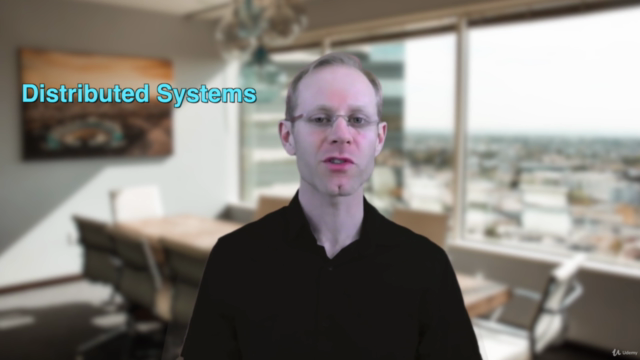Distributed Systems & Cloud Computing with Java

Why take this course?
🚀 Course Title: Distributed Systems & Cloud Computing with Java
🎓 Instructor: Michael Pogrebinsky | Software Architecture & Java Programming Expert
🔥 Course Headline: Unlock the Secrets of Scalable Java Applications in the World of Distributed Systems and Cloud Computing!
Are you ready to build software that impacts millions? 🌍
Have you ever wondered how tech giants handle immense internet traffic and transactions, securely store billions of our photos, videos, and other data, and provide an impeccable user experience with high performance 24/7 across the globe? If so, you're in the perfect place!
What You Will Learn in This Course: 🚀
-
Master Distributed Systems Theory: Gain a deep understanding of how distributed systems work and the principles behind them.
-
Practical Java Skills: Learn to build distributed applications, design parallel algorithms, and apply your knowledge with Java technologies.
-
Cloud Deployment & Scaling: Discover how to deploy distributed Java applications on the cloud and scale your applications as needed.
-
Distributed Databases: Learn strategies for scaling distributed databases that can store petabytes of data.
-
Building Resilient Systems: Understand how to construct highly scalable, fault-tolerant distributed systems that can withstand the test of time and traffic.
Modern Technologies You'll Explore: 🛠️
- Apache Kafka & Zookeeper
- MongoDB
- HAProxy
- JSON & Java HTTP Server/Client
- Protocol Buffers
- Google Cloud Platform (GCP)
- And many more cutting-edge technologies!
By the End of the Course, You Will: 🎓
-
Know best practices for architecting real-life distributed systems.
-
Scale your system to handle billions of transactions daily.
-
Deploy your application on the cloud effectively.
-
Make informed decisions when choosing technologies and designing software architecture.
-
Utilize advanced Java techniques to manage and analyze large data sets efficiently.
FAQ: 🤓
-
What do I need to know? Basic knowledge of Java is required. Knowledge of multithreading and concurrency is helpful but not mandatory.
-
Will this help me in System Design Interviews? Absolutely! This course is tailored to prepare you for system design interviews, especially those conducted by large-scale tech companies.
-
Do I need to pay for software or a cloud account? No! All the technologies covered are free and open-source. While you don't have to pay, free-tier accounts are available from most cloud providers if you wish to practice on real infrastructure.
-
Can I develop a Distributed System locally? Absolutely! You can develop and run a distributed system right on your personal computer without any additional hardware.
-
Is this course suitable for aspiring Software Architects or Technical Leads? This is the perfect course if you aim to become a Software Architect or Technical Lead, as it covers critical skills necessary for these roles in today's tech landscape.
🌟 Join Us on This Incredible Journey to Master Distributed Systems & Cloud Computing with Java! 🌟
Course Gallery




Loading charts...
Comidoc Review
Our Verdict
Boasting an impressive global rating and extensive content, "Distributed Systems & Cloud Computing with Java" offers a deep dive into the world of designing and building massively parallel applications. While real-world examples and expert instruction are definite highlights, beginners may face challenges with the swift pace and theoretical nature of some sections. Nevertheless, it remains an invaluable resource for students looking to bolster their understanding of distributed systems and cloud software architecture with Java.
What We Liked
- The course content is extensive and thorough, covering a broad range of topics related to distributed systems and cloud computing with Java.
- The instructor's knowledge and expertise in the field are apparent, making for high-quality lectures and engaging discussions.
- Real-world examples and case studies offer valuable insights into how these concepts apply to real systems, enabling better understanding and retention.
- The course is consistently updated, which reflects the instructor's dedication and commitment to providing students with relevant and current information.
Potential Drawbacks
- The pace at which the course is delivered might prove challenging for beginners, as they may need more time to digest certain complex topics or follow along with coding examples.
- Although real-world examples are helpful, some students find that not all the examples provided work as expected. Some of them might require updates or patches.
- Limited hands-on exercises and quizzes throughout the course could hinder practice and application of the concepts taught in this course.
- The theoretical nature of specific sections may be dry for some students, making it difficult to maintain interest and engagement.